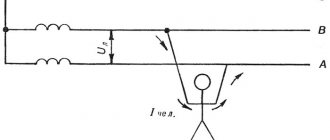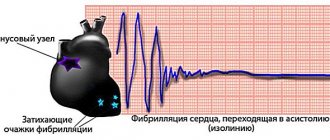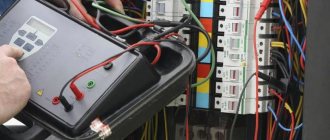- home
- electrical safety
- Precautions to Protect Against Electric Shock
The main protector against electric shock is knowledge, which should be embedded in your head.
And you must be able to apply this knowledge in simple and complex situations. Work in electrical installations can be carried out by specially trained personnel. The fact that a person is trained can be understood by a special occupational safety certificate. This certificate will include the timing and scope of testing of special knowledge in labor protection. But this is in production. Where, without a certificate, there is no work order, no safety instructions, and therefore no work.
How can you determine the professional suitability of an electrician who, for example, will do your home wiring? If you have proven tricks in this regard, write them in the comments, it will be interesting to hear your opinion.
Now directly to the topic of the article. Electrical safety is ensured by the following protective measures against electric shock:
- zeroing
- grounding
- ouzo
- use of low voltages. For example, 12V lamps instead of 220V in particularly hazardous work areas
- insulation resistance monitoring. By measuring the insulation resistance with a megohmmeter, we can determine the deterioration of its condition and determine the likelihood of a ground fault or short circuit current
- compensation of the capacitive component of ground fault current in networks above 1 kV. Reducing the capacitive component of the ground fault current using inductive coils (arcing coils) connected between the neutral and ground in three-phase networks
- protection from accidental touch. People will always accidentally touch exposed wires and tires because they are people. They can be inattentive and absent-minded. But the number of touches can be reduced with the help of protective equipment:
- protective covers, nets, wooden fences
- mechanical and electrical interlocks. For example, a stand for testing chambers of SF6 switches in production or a laboratory at a thermal power plant where electric tools are tested. In both cases, the test console and the place where the high voltage source is located are divided, as it were, into two rooms. And between them there is a mesh (glass) and a door. And there is a blockage there - until the door is closed, you cannot apply voltage. Such methods really help to stay safe when you need to test, for example, 100 gloves. In monotony you can lose concentration and make mistakes
- location of live parts at an inaccessible distance. Although there are Rusny villages where the tires are overhead. And with a height of two meters, you should accidentally raise your hand up and hello phase A, for example
In the photo below the situation is better, but still, danger is still in the air.
The following permissible distances to live parts have been determined, and as we see, up to 1000V in switchgears this distance is not standardized:
Means of protection against electric current, list, frequency of inspection, rules of application
Protective equipment against electric shock includes all devices, apparatus and instruments, the purpose of which is to prevent injury to people working with energized equipment.
Damage factors include not only electric shock, but also possible exposure to an electric arc or combustion products of electrical equipment. There are basic and additional means of protection. The first are those whose insulation provides complete protection from the operating voltage of electrical installations. They allow you to work and touch live elements that are energized. For equipment with voltages up to 1 kV, the main means of protection (hereinafter referred to as SZ) are considered to be dielectric gloves, special tools protected with insulated handles, electrical clamps, voltage indicators, insulating rods.
For electrical installations with voltages above 1 kV, the main
means of protection against electric current are the same as in installations up to 1 kV, plus devices that ensure safety during testing or measurements, as well as when carrying out repair work on electrical installations (cable puncture devices, cable damage marks, voltage indicators, insulating ladders , polymer insulators, etc.).
Additional protective equipment is also used (dielectric carpets, boots, galoshes, pads, caps, potential equalization rods, etc.), which are not able to guarantee safety, but reduce the risk of electric shock and the degree of its impact.
Depending on the impact, collective and individual means of protection are distinguished.
For electrical protection equipment, safety conditions must be observed: they must be stored dry and free of mechanical damage. Before use, a thorough inspection should be carried out, during which damaged specimens are rejected. Dielectric gloves, galoshes, carpets and boots should be no closer than half a meter from heating devices. In addition, they should not be exposed to direct sunlight or industrial liquids (oils, kerosene, gasoline, alkalis, acids, etc.).
The means of protection against electric current used must undergo regular testing, and the date of testing is marked on the product. SZ tests are carried out at the enterprise where they are used, or at nearby substations. Dielectric gloves should be checked every six months, insulated tools and voltage indicators should be checked once a year, and dielectric mats should be checked once every 2 years.
Video
Types of electric shock
XXI CENTURY Candy Fudge Scented water
266 ₽ More details
Video baby monitor Motorola MBP36S (white)
12900 ₽ More details
Men's casual bags
Basic and additional SZ in electrical installations
It should be noted that all electrically insulating means of human protection, to one degree or another, protect him from direct contact with conductive or grounded elements of electrical equipment or devices, including from electrically conductive surfaces.
Basic insulating agents
This category includes products whose material stably and reliably resists the operating voltage of electrical installations. Their use involves safe contact with live conductive elements without the risk of electrical injury or threat to life.
All main SZ, as mentioned above, differ in the type of application.
In electrical installations up to 1000 V:
- dielectric gloves
- insulating current clamp
- electrical installation tool kit with insulated handles
- current detectors
In electrical installations over 1000 V:
- insulating rods
- insulating clamps for measuring current strength
- voltage indicators
Additional insulating protective equipment
The division occurs by analogy with the main SZ.
In electrical installations up to 1000 V:
- dielectric galoshes
- dielectric mats and coverings
- insulating stands
In electrical installations over 1000 V:
- electrical installation tool set with insulated handles
- dielectric gloves
- bots
- dielectric mats and coverings
- insulating stands
Please note that while operating any electrical protective equipment or devices, it is strictly forbidden to touch their working surfaces, as well as the insulating material located behind the limit stop or ring! Also, in no case should you forget that using insulating rods, clamps or voltage indicators in electrical installations with voltages over 1000 V is only possible with dielectric gloves! In addition to the specified means and devices for protection in electrical installations, the following types of PPE are used:
- head protection helmets
- shields and goggles for eyes and face
- gas mask or respirators that protect the respiratory system from electric shock
- hand gloves
- belts and ropes that protect personnel from falling while working at height
Protective equipment
It is clear that protection circuits cannot function without the necessary equipment.
Automatic RCD
In the photo - residual current device
The most effective and widespread protective devices are automatic shutdown circuit breakers - RCDs. The undeniable advantage of these devices includes not only the possibility of protection when a person touches the open parts of the device (case), but also when touching live parts.
- Harsh statistics on electrical injuries show that the overwhelming number of cases of electric shock to a person occurs precisely during contact with live parts, because insulation fails quite rarely.
- That is why the use of RCDs is considered a prerequisite for ensuring sufficient user safety.
- The operating principle of such units is to constantly monitor a certain input value, which is compared with the nominal value. In case of deviations, the circuit is immediately disconnected.
RCD diagram
- RCDs differ from each other in efficiency, which is measured by the time it takes for the protection to operate. Shutdown usually occurs after 0.06-0.13 seconds. The response speed depends on the design of the sensor and transducer.
- Magnetic starters, contactors and circuit breakers are used as executive bodies of such devices.
- The electrical parameter that allows the equipment to conclude that an electric shock has occurred is called the RCD input signal - the current strength in the circuit is most often analyzed.
- The safest equipment is configured in such a way that the device is triggered when the input signal is equal to the largest permissible current that passes through the human body.
The PUE clearly describes all the requirements that relate to the use of RCDs:
- RCDs that react to differential current, to group lines for power supply of outlet networks located on the street and in high-risk premises, are required to be installed. For example, an RCD that responds to a differential current of no more than 30 mA is installed on sockets in the bathroom, located 0.6 meters away from the shower area.
- An RCD is also installed when the existing automation (plugs) is not able to open the circuit faster than in 0.4 seconds in 220V networks due to low current values and if there are no potential equalization systems.
- These devices are also installed on mobile electrical installations that receive power from stationary sources. In addition, they have protection in the form of device overcurrent protection.
- RCDs are installed on electrical installations receiving power from a network with a solidly grounded neutral, with protective grounding of open parts that are not connected to the neutral. In this case, the device is selected taking into account the potential of the electrical installation body compared to the ground.
- Residual current devices cannot be used in three-phase networks in which the neutral is one common conductor.
RCD check
RCDs must be checked periodically. The timing of this is usually determined by the manufacturer's instructions, but this period cannot exceed one quarter. For an RCD connected to the network, the test is performed by pressing the “test” button or simply “t”.
Advice! If a malfunction is detected, the operation of electrical equipment that does not have other degrees of protection is prohibited.
Number and types of protective equipment in electrical installations
| RU voltage up to 1000 V | RU voltage over 1000 V | ||
| Name | Quantity, pcs. | Name | Quantity, pcs. |
| Universal or operational insulating rod | Depending on existing conditions | Universal or operational insulating rod | Two for each voltage class available |
| Voltage indicator | 2 | Voltage indicators | similarly |
| Insulating pliers | 1 | Insulating pliers (in the absence of a universal rod) | One tool per available voltage class (subject to appropriate fuses) |
| Dielectric gloves | Two pairs | Dielectric gloves | 2 pairs (or more) |
| Insulating galoshes | Two pairs | Dielectric boots (for open switchgear) | 1 pair |
| Insulating (dielectric) mat, stand or cover | Depending on existing conditions | Portable grounding | At least two pairs for each voltage category |
| Protective fences, dielectric covers, portable posters and safety signs | Depending on existing conditions | Protective shields, barriers or fences | 2 or more |
| Protective shields/goggles | 1 | Posters, banners and safety signs | 2 |
| Portable grounding | Depending on existing conditions | Dielectric (insulating) gas mask | 2 |
| Safety glasses/shields | 2 | ||











